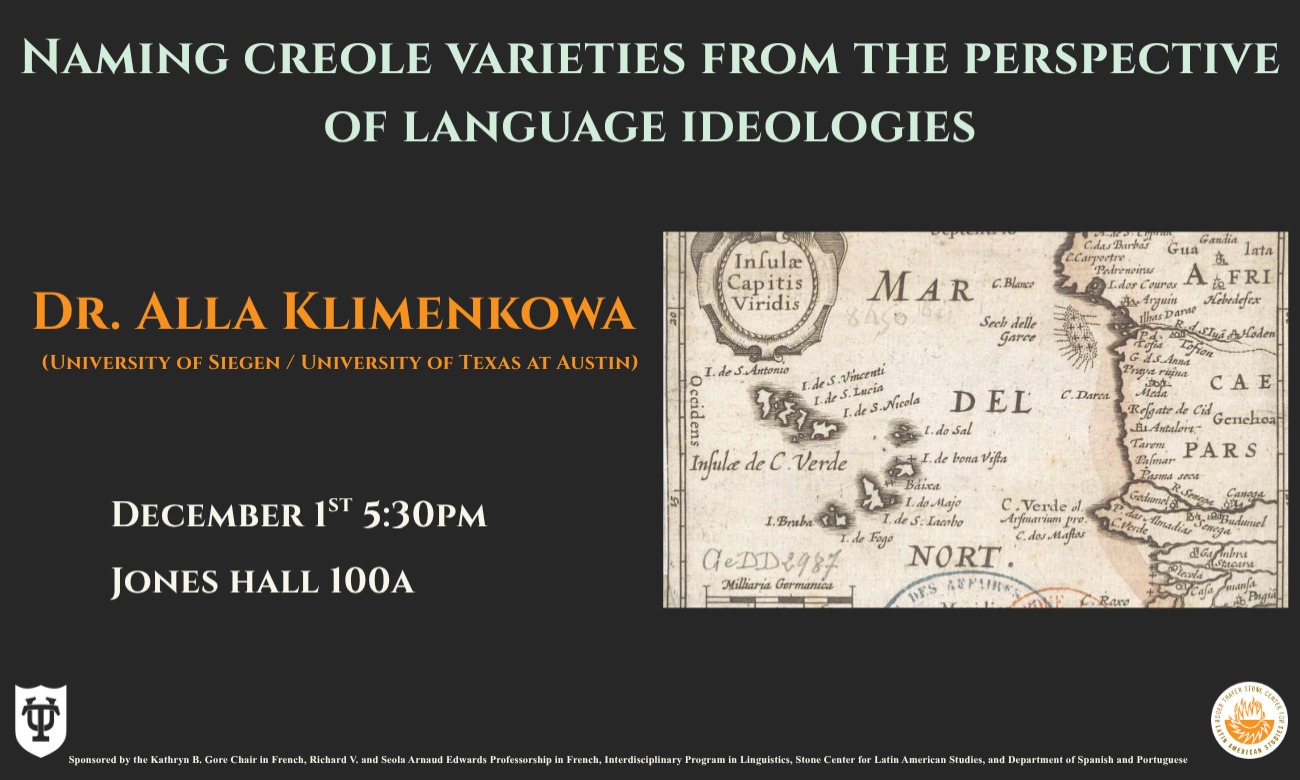
“Naming creole varieties from the perspective of language ideologies”
Dr. Alla Klimenkowa Krohner (University of Siegen, University of Texas at Austin)
📅 Date: Monday, December 1
⏰ Time: 5:30 p.m.
📍 Location: Jones Hall 100A (Greenleaf Conference Room)
The Cape Verde Islands - Upper Guinea contact zone is where Portuguese crioulo and its loan translations French créole, Spanish criollo, and English creole first emerged to designate pidgin or creole language varieties. Taking the perspective of language ideologies, we differentiate between the cultural-linguistic setting of local communities and the perception of European outsiders, and hence between the use of autoglossonyms, i.e., names given by speakers, and the use of alloglossonyms, i.e., names given by outsiders. We explore what these names tell us about local sociolinguistic reality, about various concepts of ethnic and linguistic identity, as well as about important external factors that determined views of and attitudes towards local ways of speaking.
Historical sources reveal that the glossonym crioulo first appeared in reference to Portuguese-based varieties spoken by Luso-African communities on the Cape Verde Islands and along the Upper Guinea coast around the 17th century. Alongside the ethnonym ‘Portuguese’, crioulo might already have served as an autodesignation of Luso-Africans, whose particular language formed part of their local identity connected with the Portuguese culture. During the 17th-18th centuries, French, English and Dutch interlopers brought with them a new conception of identity based on otherness and influenced by racialized views on ethnic diversity. It clashed with the sense of identity of Luso-Africans, also in regard to their ways of speaking.
By focusing on French travel accounts (cf. Villaut de Bellefonds, Jajolet de La Courbe, Barbot), we will explore in what way European outsiders molded the connotation of the name crioulo due to their commercial interests, their understanding of the language and its functions, and their attitude towards Luso-Africans in West Africa. We will see whether and to what extent the conventions of labeling local varieties in the 17th-18th-century French Caribbean (cf. Mongin, Labat, Girod de Chantrans, and Moreau de Saint-Méry) correlated with names and labels used by contemporary French travelers in West Africa.
Sponsored by the Kathryn B. Gore Chair in French, Richard V. and Seola Arnaud Edwards Professorship in French, Interdisciplinary Program in Linguistics, Stone Center for Latin American Studies, and Department of Spanish and Portuguese
